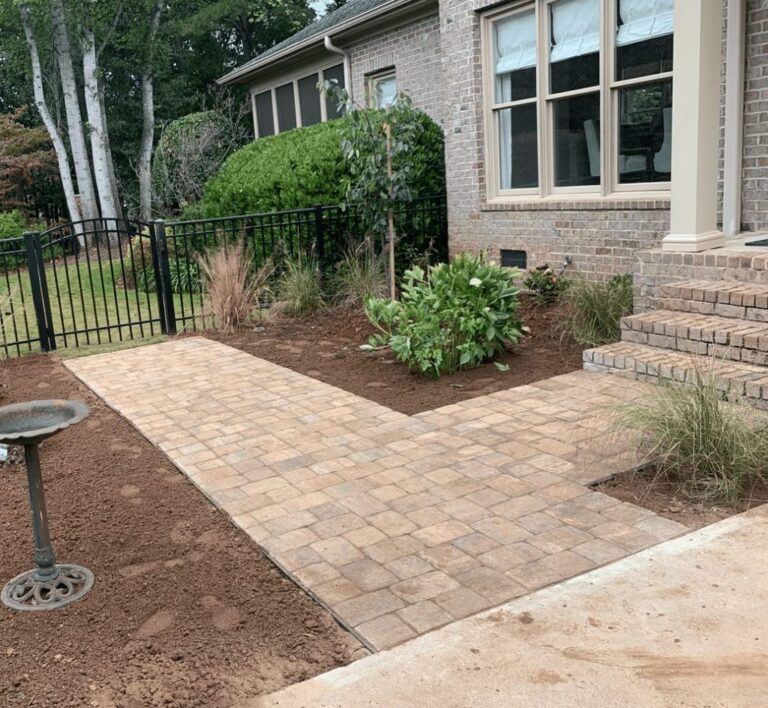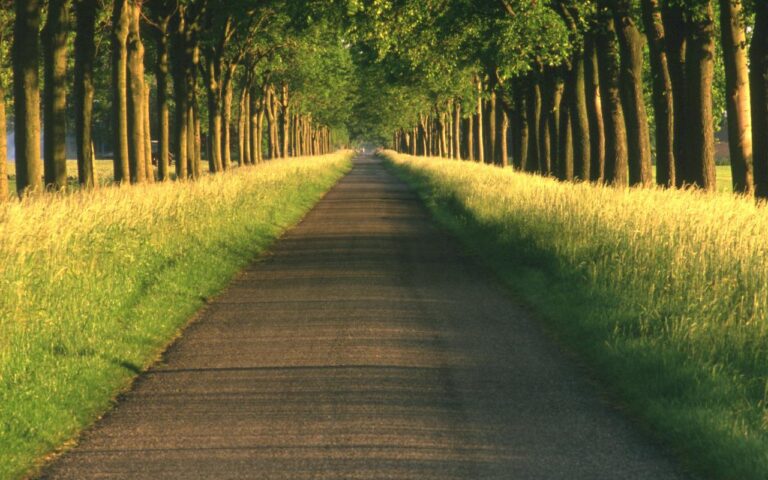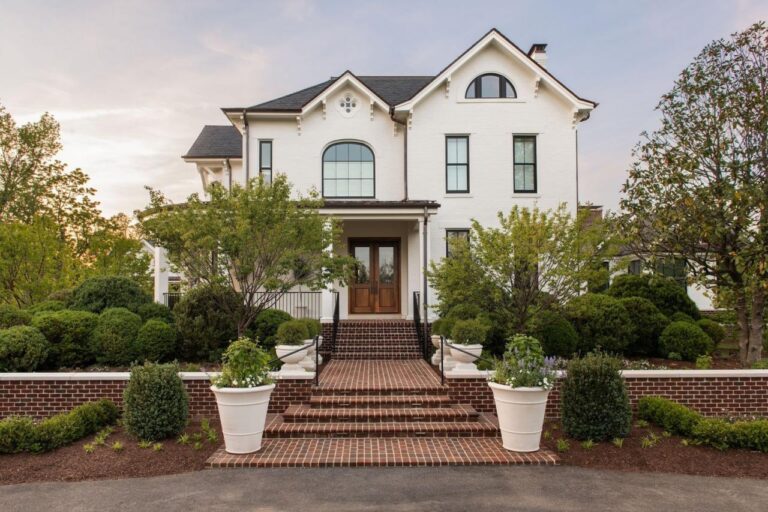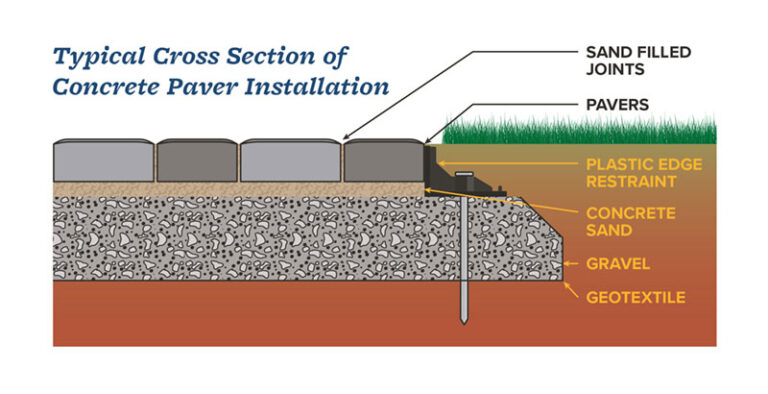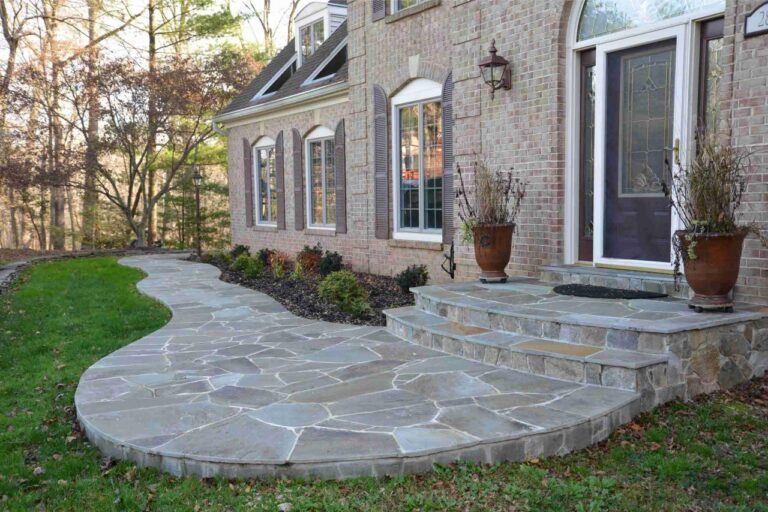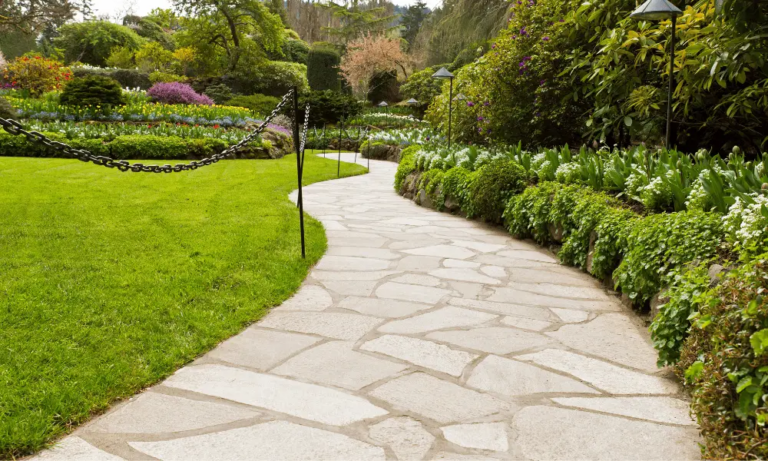Front Walkway Landscaping
Front walkway landscaping transforms the entrance to your home, setting the tone for the entire property. This guide explores various design styles, from formal to informal, showcasing the interplay of hardscaping materials like brick, stone, and concrete with carefully selected plants. We’ll delve into plant selection, considering sun exposure, mature size, and maintenance, to create visually stunning and functional walkways. Learn how to incorporate lighting and other hardscaping elements to enhance your design, all while staying within a budget.
We will cover a range of topics including choosing the right plants for your climate and walkway style, incorporating lighting to enhance safety and aesthetics, and utilizing various hardscaping materials to create a durable and beautiful walkway. We’ll also explore budget-friendly options and provide practical tips for DIY enthusiasts.
Defining Front Walkway Landscaping Styles
The style of your front walkway significantly impacts your home’s curb appeal. Choosing the right style depends on your personal preferences, the architectural style of your home, and the overall landscape design. This section explores various walkway styles, highlighting their distinct characteristics and suitable plant choices.
Five Distinct Front Walkway Landscaping Styles
Several distinct styles can transform a simple walkway into a captivating feature. Here are five examples, each with its own unique aesthetic and planting suggestions:
- Formal Style: Characterized by symmetry, straight lines, and meticulously maintained plantings. Suitable plants include boxwood hedges, neatly trimmed shrubs like Japanese Holly, and evenly spaced flowering annuals. Hardscaping often features uniform paving stones or brick.
- Informal Style: Emphasizes natural curves, varied plant heights and textures, and a more relaxed, less structured appearance. Suitable plants include flowering perennials like coneflowers and daylilies, ornamental grasses, and groundcovers like creeping phlox.
- Cottage Style: Evokes a charming, rustic feel with winding pathways, overflowing flowerbeds, and a mix of cottage-style plants such as roses, lavender, and foxgloves. Hardscaping might incorporate natural stone or brick with a slightly uneven finish.
- Modern Style: Features clean lines, minimalist planting, and contemporary hardscaping materials such as concrete, sleek pavers, or gravel. Suitable plants include structural grasses, succulents, and low-growing evergreens.
- Mediterranean Style: Reflects the sun-drenched landscapes of the Mediterranean with drought-tolerant plants, such as rosemary, lavender, and olive trees. Hardscaping often includes terracotta tiles or natural stone.
Formal vs. Informal Walkway Designs: A Visual Comparison
Formal walkways create a sense of order and elegance, while informal walkways offer a more relaxed and welcoming atmosphere. Formal designs often use symmetrical layouts and uniform materials, creating a polished and sophisticated look. In contrast, informal designs utilize meandering paths, varied plant heights, and a mix of hardscaping materials, resulting in a more natural and whimsical aesthetic.
Hardscaping Materials in Different Walkway Styles
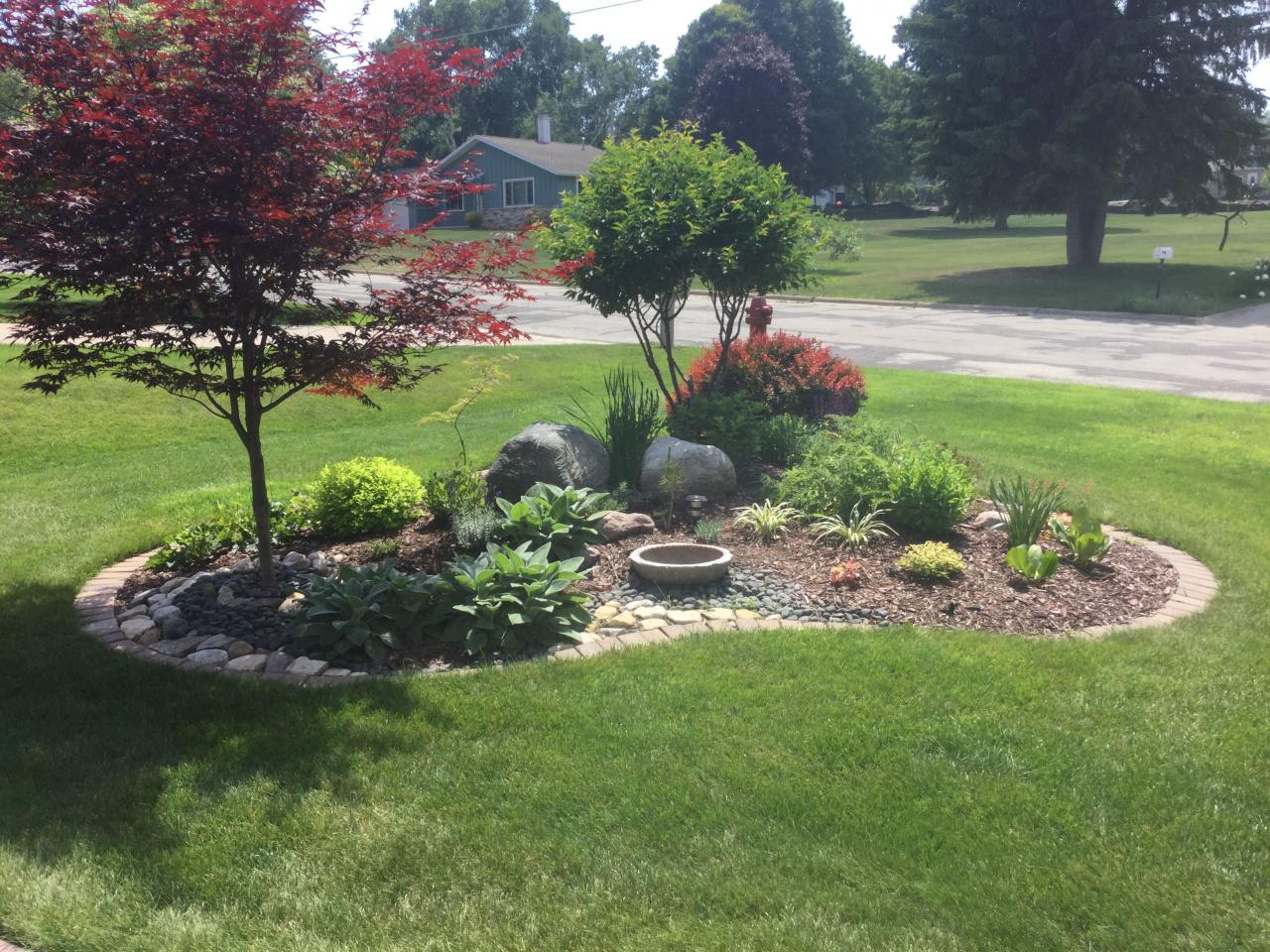
Source: pinimg.com
The choice of hardscaping material significantly influences the overall style and feel of the walkway. Brick provides a classic and versatile option, suitable for formal, cottage, and even informal styles. Natural stone offers a more rustic and natural look, ideal for informal, cottage, and Mediterranean styles. Concrete offers a modern and clean aesthetic, perfect for contemporary designs, but can be adapted to other styles with creative texturing and coloring.
Three Walkway Design Examples
To illustrate the versatility of walkway design, here are three examples incorporating different hardscaping materials and planting schemes:
- Formal Brick Walkway: A straight pathway lined with neatly trimmed boxwood hedges and evenly spaced flowering annuals. The brick pavers are laid in a running bond pattern, creating a classic and elegant look.
- Informal Stone Walkway: A meandering pathway made of irregularly shaped flagstones, bordered by a mix of flowering perennials, ornamental grasses, and groundcovers. This design creates a natural and welcoming atmosphere.
- Modern Concrete Walkway: A straight, minimalist pathway made of smooth, gray concrete. The planting scheme features low-growing succulents and structural grasses, enhancing the clean lines of the design.
Plant Selection and Placement for Front Walkways
Careful plant selection and placement are crucial for creating a visually appealing and functional front walkway. Choosing low-maintenance plants that thrive in your climate and sun conditions is key to long-term success. Proper spacing ensures both visual appeal and easy access.
Ten Low-Maintenance Plants for Front Walkways
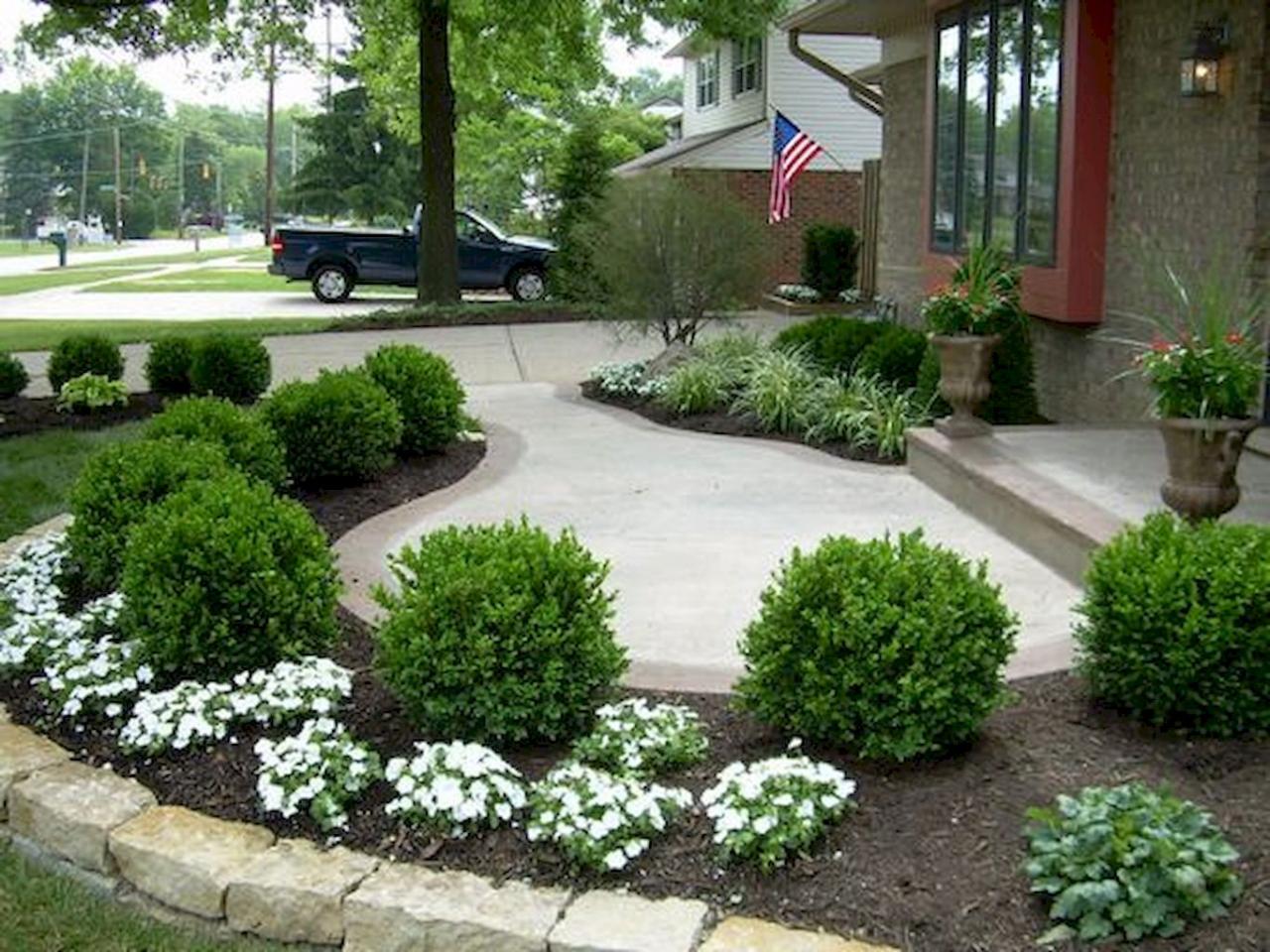
Source: hawk-haven.com
These plants offer a balance of beauty and practicality, requiring minimal upkeep:
- Lavender: Full sun, 2-3 ft tall and wide, fragrant flowers.
- Coneflower: Full sun, 2-4 ft tall and wide, daisy-like flowers.
- Sedum: Full sun, 6-12 inches tall and wide, succulent foliage and late-season blooms.
- Hosta: Shade, 1-3 ft tall and wide, attractive foliage.
- Astilbe: Partial shade, 1-3 ft tall and wide, feathery plumes of flowers.
- Creeping Phlox: Partial shade, 6-12 inches tall and wide, spreading ground cover with colorful blooms.
- Boxwood: Full sun to partial shade, 3-6 ft tall and wide, classic evergreen shrub.
- Japanese Holly: Shade to partial shade, 3-6 ft tall and wide, glossy evergreen foliage.
- Spirea: Full sun to partial shade, 2-5 ft tall and wide, abundant flowers.
- Yarrow: Full sun, 1-3 ft tall and wide, feathery foliage and flat-topped flower clusters.
Effective Plant Combinations for Visual Interest
Combining plants with varying heights, textures, colors, and bloom times creates visual interest throughout the seasons. For example, a combination of tall coneflowers, shorter sedums, and creeping phlox provides height variation and continuous color.
Plant Spacing and Walkway Accessibility
Proper plant spacing is essential for both the visual appeal and the functionality of the walkway. Overcrowding can hinder access and create a cluttered look. Adequate spacing allows plants to mature without impeding foot traffic and provides a balanced aesthetic.
Plant Choices for Different Sun Conditions
| Plant | Sun | Height (ft) | Width (ft) | Bloom Time |
|---|---|---|---|---|
| Coneflower | Full Sun | 2-4 | 2-4 | Summer |
| Sedum | Full Sun | 0.5-1 | 1-2 | Late Summer/Fall |
| Hosta | Shade | 1-3 | 1-3 | Summer |
| Astilbe | Partial Shade | 1-3 | 1-2 | Summer |
Incorporating Lighting and Hardscaping Elements
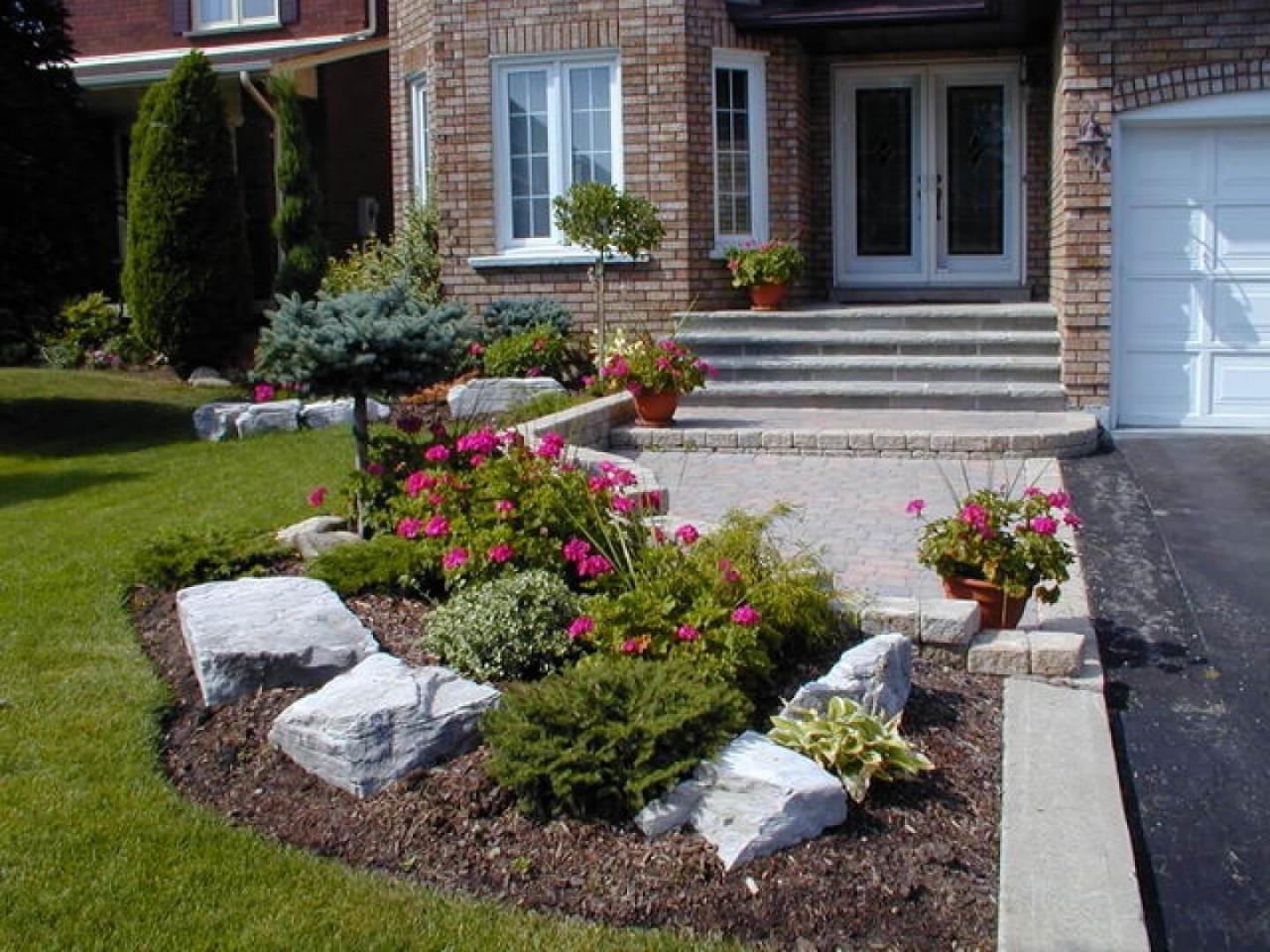
Source: home decor ideas.UK
Pathway lighting and strategic hardscaping significantly enhance the aesthetic appeal and functionality of a front walkway. These elements add both safety and visual interest to the space, transforming it from a simple path into a welcoming and inviting feature.
Benefits of Pathway Lighting, Front Walkway Landscaping
Pathway lighting improves safety by illuminating the walkway at night, preventing trips and falls. It also enhances the overall aesthetic, highlighting the walkway’s design and landscaping features. The soft glow of lights creates a warm and inviting atmosphere.
Types of Pathway Lighting
Several lighting options are available, each with its unique aesthetic impact. Solar-powered lights offer a convenient and eco-friendly solution, while electric lights provide brighter and more consistent illumination. Consider the style and ambiance you want to create when selecting lighting.
Integrating Retaining Walls and Borders
Retaining walls can be used to create level walkways in sloped areas, adding a structural element to the design. Borders define the walkway’s edges, separating it from the surrounding landscaping and creating a clean, polished look. Materials like brick, stone, or concrete can be used to create visually appealing borders that complement the walkway’s design.
Hardscaping Materials for Walkways
A range of durable and aesthetically pleasing hardscaping materials are suitable for creating a functional and visually appealing front walkway. Brick offers classic charm and durability, while natural stone provides a rustic and natural feel. Concrete is a versatile option, allowing for customization through texturing and coloring. Each material requires different levels of maintenance, impacting long-term costs.
Creating a Budget-Friendly Front Walkway
Creating a beautiful front walkway doesn’t require breaking the bank. By carefully selecting plants and hardscaping materials and employing DIY techniques, you can achieve a stunning result without exceeding your budget.
Cost-Effective Plant Options
Many affordable and readily available plants are suitable for front walkway landscaping. Examples include readily propagated plants like sedum, coneflowers, and daylilies. Consider purchasing plants from local nurseries or plant sales, often offering lower prices than big-box stores.
Sourcing Affordable Hardscaping Materials
Look for sales and discounts on hardscaping materials from local suppliers or salvage yards. Consider using reclaimed materials like bricks or stones, adding character and reducing costs. DIY installation can also significantly reduce labor costs.
DIY Landscaping Techniques
Many landscaping tasks can be tackled with DIY techniques, minimizing labor costs. Simple tasks like planting, weeding, and mulching can be easily done by yourself. Research online tutorials and resources to guide you through more complex tasks.
Budget-Friendly Walkway Plan
A budget-friendly walkway might incorporate readily available materials like gravel or readily available concrete pavers. Planting could focus on affordable and easily propagated plants like sedum and coneflowers. This approach allows for a visually appealing walkway without significant expense.
Illustrative Examples of Front Walkway Landscaping
These examples showcase the diversity achievable in front walkway design, demonstrating how different elements can be combined to create unique and appealing spaces.
Curved Pathway with Native Plants and Natural Stone
Imagine a gently curving pathway made of natural flagstones, bordered by a mix of native plants such as coneflowers, black-eyed Susans, and ferns. The meandering path creates a sense of movement and exploration, while the native plants enhance the natural beauty of the landscape. The overall aesthetic is rustic and inviting.
Brick Pavers and Flowering Shrubs
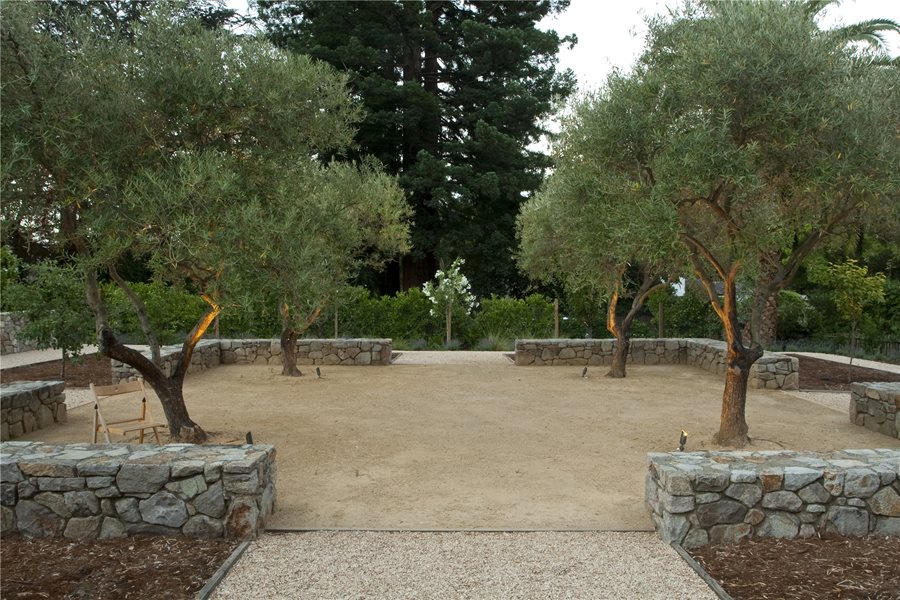
Source: landscapingnetwork.com
This design features a straight pathway made of red brick pavers, bordered by a mix of flowering shrubs such as spirea, potentilla, and hydrangeas. The vibrant colors of the flowers create a cheerful and welcoming atmosphere, while the brick provides a classic and elegant backdrop. The use of varying plant heights adds depth and visual interest.
Water Feature Integration
A small, tranquil fountain or pond can be incorporated into a front walkway design, adding a unique and calming element. The gentle sound of running water creates a peaceful atmosphere, while the visual appeal of the water feature enhances the overall aesthetic. Surrounding the water feature with appropriate plants, such as moisture-loving ferns or hostas, creates a cohesive and visually appealing landscape.
FAQ Section
What is the best time of year to landscape a front walkway?
The ideal time depends on your climate, but spring or fall generally offer the best conditions for planting, allowing roots to establish before extreme heat or cold.
How wide should my front walkway be?
A minimum width of 36 inches is recommended for comfortable two-way pedestrian traffic. Wider walkways are preferable for larger homes or areas with heavy foot traffic.
How do I prevent weeds from growing in my walkway?
Properly install landscape fabric beneath pavers or stones to suppress weed growth. Regularly remove any weeds that do emerge.
What are some eco-friendly options for front walkway landscaping?
Consider using permeable paving materials to allow water to seep into the ground, reducing runoff. Choose native plants that require less water and maintenance.
How often should I maintain my front walkway landscaping?
Regular maintenance varies depending on plant choices, but tasks like weeding, pruning, and occasional cleaning are necessary to keep your walkway looking its best.
